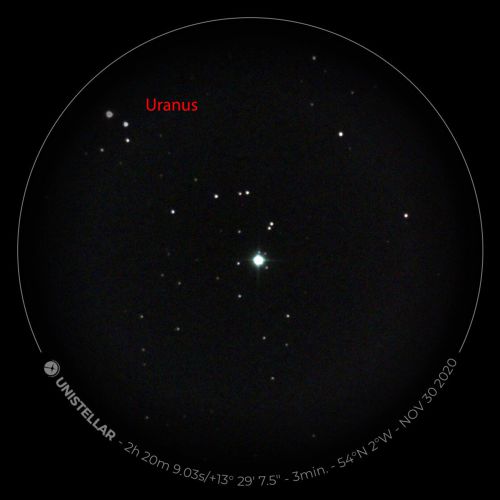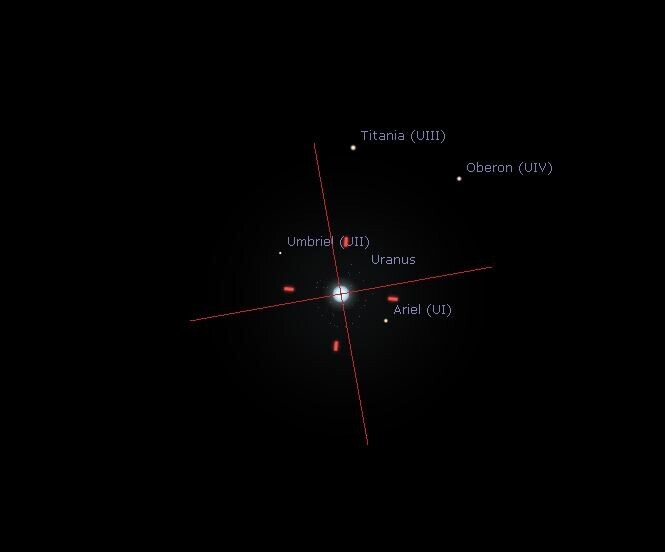Information...
Uranus, the seventh planet from the Sun, is an ice-giant which has an atmosphere of hydrogen and helium similar to Jupiter and Saturn, but with higher amounts of water, ammonia and methane along with traces of other hydrocarbons.
It's average distance from the Sun is approx. 3 billion km (about 20 times that of the Earth), and it's orbital period is 84 years. The planet's interior rotates evey 17 hours 14 mins, but some visible features rotate faster with periods up to 14 hours. Interestingly, the planet's axis of rotation is tilted by 97.7°, so that it spins on an axis almost parallel with the plane of the Solar System. One pole faces the Sun continuously, so that in a full orbit each pole gets 42 years of constant sunlight followed by 42 years of darkness.
Uranus has a mass of about 14.5 × that of the Earth, with a radius of about 4 × that of the Earth. It's thought to be comprised of a rocky core, with an icy mantle and a gaseous outer layer of hydrogen & helium.
From Earth Uranus appears featureless in the visible, appearing as a pale cyan-blue disk. As Robin Jakeways Unistellar scope image above shows, it is also possible to see some of the larger moons
For much more detailed information on Uranus see the Wikipedia entry.

